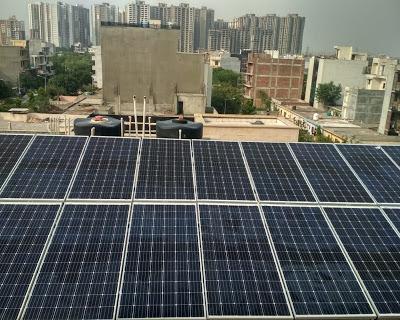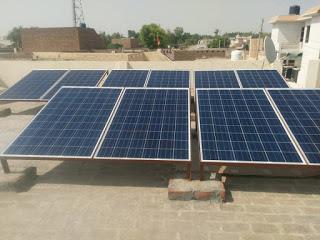 You are thinking about buying solar panels for home and business, but got confused about which type to go for? You’re at the right place.
You are thinking about buying solar panels for home and business, but got confused about which type to go for? You’re at the right place.There’s a myriad of variables that you should take into account when you are buying a solar photovoltaic (PV) system – our job here at Loom Solar is to assist you sort through them!In this blog, you will know everything you need to know about the different types of solar panels for home and business use (monocrystalline vs. polycrystalline).Let’s start with the different types of solar panels currently on the market, list their benefits and downsides, and then look at a few typical scenarios where certain types would be the better than others (hopefully one of them resonates with you).Monocrystalline Silicon Solar Cells
Solar cells made of monocrystalline silicon (mono-Si), also called single-crystalline silicon (single-crystal-Si), are quite easily recognizable by an external even coloring and uniform look, indicating high-purity silicon, as you can see on the picture below:10 kW Monocrystalline solar panels Installed by Loom Solar Team in NoidaMonocrystalline solar cells are made out of silicon ingots, which are cylindrical in shape. To optimize performance and lower costs of a single monocrystalline solar cell, four sides are cut out of the cylindrical ingots to make silicon wafers, which is what gives monocrystalline solar panels their characteristic look.A good way to separate mono crystalline and polycrystalline solar panels is that polycrystalline solar cells look perfectly rectangular with no rounded edges.Advantages
- Monocrystalline solar panels have the highest efficiency rates since they are made out of the highest-grade silicon. The efficiency rates of monocrystalline solar panels are typically 15-20%.Loom Solar produces the highest efficiency solar panels on the Indian market today.
- Monocrystalline silicon solar panels are space-efficient. Since these solar panels yield the highest power outputs, they also require the least amount of space compared to any other types. Monocrystalline solar panels produce up to four times the amount of electricity as thin-film solar panels.
- Monocrystalline solar panels live the longest. Most solar panel manufacturers put a 25-year warranty on their monocrystalline solar panels.
- Tend to perform better than similarly rated polycrystalline solar panels at low-light conditions.
- Monocrystalline solar panels are the most expensive. From a financial standpoint, a solar panel that is made of polycrystalline silicon (and in some cases thin-film) can be a better choice for some homeowners.
- If the solar panel is partially covered with shade, dirt or snow, the entire circuit can break down. Consider getting micro-inverters instead of central string inverters if you think coverage will be a problem. Micro-inverters will make sure that not the entire solar array is affected by shading issues with only one of the solar panels.
- The Czochralski process is used to produce monocrystalline silicon. It results in large cylindrical ingots. Four sides are cut out of the ingots to make silicon wafers. A significant amount of the original silicon ends up as waste.
- Monocrystalline solar panels tend to be more efficient in warm weather. Performance suffers as temperature goes up, but less so than polycrystalline solar panels. For most homeowners temperature is not a concern.
 Advantages
Advantages- The process used to make polycrystalline silicon is simpler and cost less. The amount of waste silicon is less compared to monocrystalline.
- Polycrystalline solar panels tend to have slightly lower heat tolerance than monocrystalline solar panels. This technically means that they perform slightly worse than monocrystalline solar panels in high temperatures. Heat can affect the performance of solar panels and shorten their lifespans. However, this effect is minor, and most homeowners do not need to take it into account.
- The efficiency of polycrystalline-based solar panels is typically 13-16%. Because of lower silicon purity, polycrystalline solar panels are not quite as efficient as monocrystalline solar panels.
- Lower space-efficiency. You generally need to cover a larger surface to output the same electrical power as you would with a solar panel made of monocrystalline silicon. However, this does not mean every monocrystalline solar panel perform better than those based on polycrystalline silicon.
- Monocrystalline and thin-film solar panels tend to be more aesthetically pleasing since they have a more uniform look compared to the speckled blue color of polycrystalline silicon.

